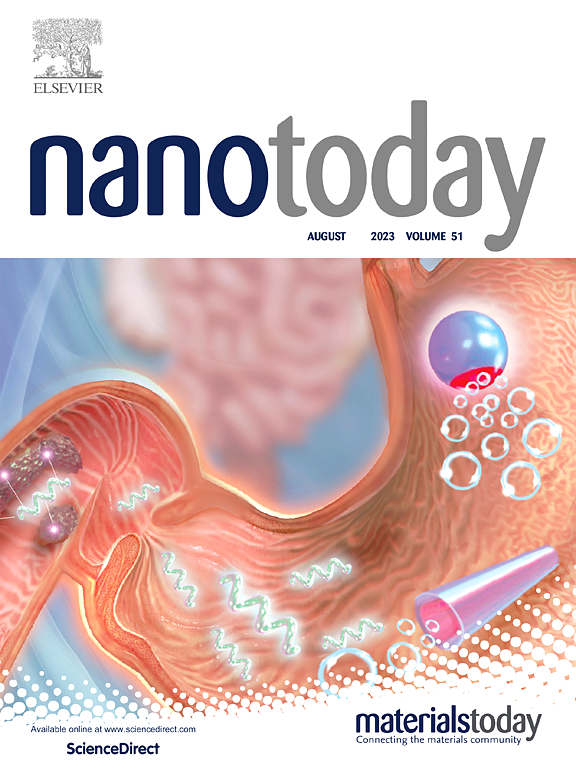光通过肠道微生物群与MXene调节蜜蜂的社会行为
IF 10.9
1区 材料科学
Q1 CHEMISTRY, MULTIDISCIPLINARY
引用次数: 0
摘要
蜜蜂是重要的传粉媒介,具有复杂的社会行为,是神经生物学研究的模型。肠道菌群调控是通过肠脑轴调控宿主行为的一种新方法。在各种调制策略中,光由于其精确的时间和空间控制而具有先进的优势。本研究利用纳米材料MXene的光敏特性,通过光控制来调节蜜蜂肠道微生物群,影响神经功能和行为。光照会增加雪茅的丰度、肠道免疫基因表达和抑制性神经递质,如组胺。随后,与嗅觉功能相关的大脑基因的表达减少,减少了社会互动。MXene治疗同样可以增强斯诺德草和肠道免疫基因,抑制与神经突起生长有关的大脑基因,减少运动和社交行为。然而,光和MXene联合治疗增加了兴奋性神经递质血清素的水平,并增强了社会互动。本研究通过物理方法深入了解肠脑轴调节及其对蜜蜂健康的影响。本文章由计算机程序翻译,如有差异,请以英文原文为准。
Light tunes the social behavior of honeybee via gut microbiota with MXene
Honeybees are essential pollinators with complex social behaviors and serve as a model for neurobiological research. It is noticed that regulating gut microbiota is a novel method to modulate host behavior through the gut-brain axis. Among various modulation strategies, light offers advanced advantages due to its precise temporal and spatial control. This study leverages the photosensitive properties of nanomaterial MXene to modulate honeybee gut microbiota via light control, impacting neural functions and behavior. Light exposure increases Snodgrassella abundance, gut immune gene expression, and inhibitory neurotransmitters like histamine. Subsequently, the expression of brain genes related to olfactory function is reduced, decreasing social interactions. MXene treatment similarly boosts Snodgrassella and gut immune genes, inhibiting brain genes related to neurite outgrowth and reducing locomotion and social behavior. However, combined light and MXene treatment increases levels of the excitatory neurotransmitter serotonin and enhances social interactions. This study offers insights into gut-brain axis modulation by physics approach and its effects on honeybee health.
求助全文
通过发布文献求助,成功后即可免费获取论文全文。
去求助
来源期刊

Nano Today
工程技术-材料科学:综合
CiteScore
21.50
自引率
3.40%
发文量
305
审稿时长
40 days
期刊介绍:
Nano Today is a journal dedicated to publishing influential and innovative work in the field of nanoscience and technology. It covers a wide range of subject areas including biomaterials, materials chemistry, materials science, chemistry, bioengineering, biochemistry, genetics and molecular biology, engineering, and nanotechnology. The journal considers articles that inform readers about the latest research, breakthroughs, and topical issues in these fields. It provides comprehensive coverage through a mixture of peer-reviewed articles, research news, and information on key developments. Nano Today is abstracted and indexed in Science Citation Index, Ei Compendex, Embase, Scopus, and INSPEC.
 求助内容:
求助内容: 应助结果提醒方式:
应助结果提醒方式:


